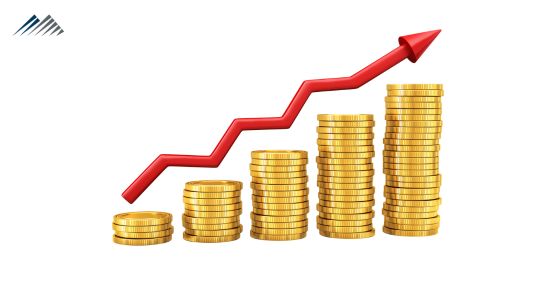What Are the Tax Implications of Gold and Other Precious Metal Investments?

To hedge against stock market volatility and inflation, some IRA owners and investors put money into precious metal assets, such as gold, silver and platinum. Although precious metals can be volatile, that gamble appears to have paid off for many investors. Over the last year, the prices of these alternative investments have soared.
Whether you’re already dabbling in the precious metal markets or thinking about jumping on the bandwagon, you should learn about the federal income tax implications of holding these assets in your IRAs and taxable brokerage firm accounts.
Precious Metal Assets Held in IRAs
Under the federal income tax rules, an IRA investment in any metal or coin is generally treated as the acquisition of a collectible. As such, when an IRA owner purchases a physical precious metal asset, the transaction is characterized as a taxable distribution from the IRA followed by a purchase of the metal or coin. In effect, this general rule prohibits IRAs from investing in precious metals or coins made from precious metals. At first blush, this might appear to throw cold water on the idea of holding precious metal assets in your IRA.
However, there’s an important exception to the preceding general rule that allows IRAs to invest in:
- Certain gold, silver and platinum coins (such as American Gold Eagle coins, Canadian Gold Maple Leaf coins, American Silver Eagle coins and American Platinum Eagle coins), and
- Gold, silver, platinum and palladium bullion that meets applicable purity standards. (For example, gold bars must be at least 99.5% pure, and silver bars must be at least 99.9% pure.)
The coins or bullion must be held by the IRA trustee or custodian, rather than directly by the IRA owner. These rules apply equally to traditional IRAs, Roth IRAs, Simplified Employee Pension (SEP) accounts and Savings Incentive Match Plans for Employees (SIMPLE) IRAs.
It can be challenging to find an IRA trustee that’s willing to set up a self-directed IRA and facilitate the physical transfer and storage of precious metal assets. However, your professional advisor or an internet search can help you locate a legitimate precious metal IRA trustee. These trustees usually charge:
- A one-time account setup fee,
- Annual administrative or maintenance fees,
- Annual fees for storage and insurance, and
- Transaction-based fees for contributions, distributions, and commissions for precious metal purchases and sales.
These costs may be fixed or based on the value of the stored assets.
IRA Investments in Precious Metal ETFs and Mining Stocks
If you don’t want to deal with the hassles related to physical ownership of precious metal coins or bullion, your IRA can indirectly participate in this market by investing in precious metal exchange traded funds (ETFs). These funds track the value of particular precious metals.
Under current tax law, purchases of precious metal ETFs aren’t treated as the acquisition of collectibles. Instead, they’re classified as investments in grantor trusts. Presumably, a reputable IRA trustee won’t let IRAs buy shares in ineligible ETFs in the first place. But if you have doubts about an IRA being allowed to own a particular precious metals ETF, review the tax section of the fund’s online prospectus.
Another indirect way for your IRA to invest in precious metals is to buy common stock shares of mining companies. IRAs aren’t prohibited from investing in these publicly traded stocks under the tax law.
Age-Related Considerations for IRA Owners
Because precious metal prices can be volatile, using an IRA to invest in these assets becomes riskier as you approach or reach retirement age. In addition, once a traditional IRA owner reaches age 73, he or she must take annual required minimum distributions (RMDs) from the account. An individual’s traditional IRAs (including any SEP-IRAs and SIMPLE IRAs) must have sufficient liquidity to allow for RMDs. That said, RMDs aren’t required to be taken from each IRA. The only requirement is that at least the proper total RMD amount must be withdrawn from one or more accounts.
For example, you could have one IRA that’s invested in precious metal bullion and another that’s invested in liquid assets, such as stocks and mutual funds. The annual RMD amount can be taken from the liquid account while leaving the precious metal account untouched.
Precious Metal EFTs and Mining Stocks Held in Taxable Accounts
The standard maximum individual federal income tax rate for long-term capital gains is currently 20%. However, under current tax rules, long-term capital gains from selling precious metal ETF shares held in an individual’s taxable brokerage firm account are subject to a 28% maximum federal income tax rate. Why? The gains from these ETFs are considered to come from selling collectibles.
Short-term gains from selling precious metal ETF shares held in an individual’s taxable brokerage firm account are subject to a maximum federal rate of 37%. Both long- and short-term gains from these investments can also get hit with the 3.8% net investment income tax (NIIT) and state income taxes, if applicable.
Long-term gains from selling mining stocks held in an individual’s taxable brokerage firm account are currently subject to the standard 20% maximum federal rate. Short-term gains from selling mining stocks held in an individual’s taxable brokerage firm account are subject to a maximum federal rate of 37%. Both long- and short-term gains from these investments can also get hit with the 3.8% NIIT and state income taxes, if applicable.
Should You Go for the Gold?
Of course, nothing prohibits you from buying and holding gold bars, valuable coins or precious metal bullion in your safe deposit box. However, many people want to use their IRAs and taxable brokerage accounts to invest in precious metals. If you want more information about the advantages and disadvantages of these options and the related tax implications, contact your tax advisor.

